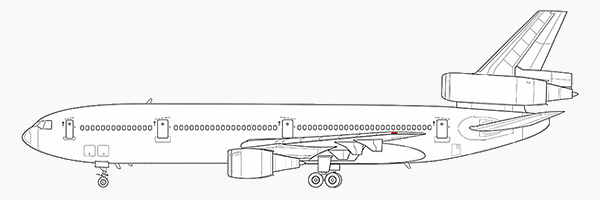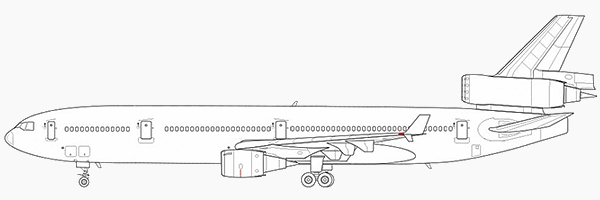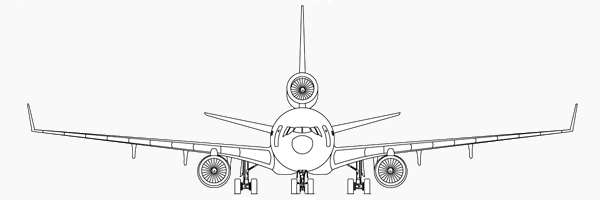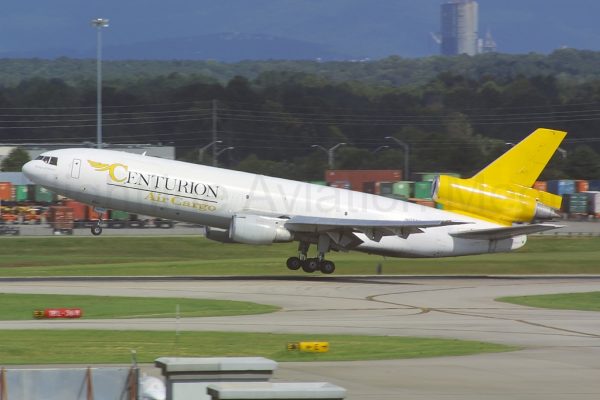3 Engines – 2 Under the Wings, 1 on the Tail
There are currently no 3 engine jets in production. The three airliners that have 2 engines under the wings and 1 in the tail are the Boeing MD-10 (formerly the McDonnell Douglas DC-10) and MD-11, and the Lockheed L1011 Tristar. Only the MD-10 & MD-11 remain in service as freighters, firebombers, and military aerial refueling tankers. Place your mouse over the red links below to see the differences highlighted in the illustrations below.
Background
What to Look For
Both of these planes are very similar and based on the same design. The MD-11 is just a more modern version. There are a couple of major differences that are visible to spotters. All MD-11s have large wingtip extensions called winglets. Also, the tailcone at the rear of the MD-11 fuselage is wedge shaped while it is rounded on the DC-10.
An MD-11 is 21ft longer than a DC-10.
The DC-10 was originally available as a freighter but only a small number were built. Many more were converted from passenger to freighter configuration later. The MD-11 was also available as a freighter from the factory. In addition, all the original DC-10s that remain in service have undergone a cockpit upgrade to digital instrumentation with the new designation MD-10.
The Air Force version of these jets is called the KC-10 Extender and is based on the DC-10 freighter with a refueling boom added under the tail.



Both of these planes are very similar and based on the same design. The MD-11 is just a more modern version. There are a couple of major differences that are visible to spotters. All MD-11s have large wingtip extensions called winglets. Also, the tailcone at the rear of the MD-11 fuselage is wedge shaped while it is rounded on the DC-10.
The DC-10 was originally available as a freighter but only a small number were built. Many more were converted from passenger to freighter configuration later. The MD-11 was also available as a freighter from the factory. In addition, all the original DC-10s that remain in service have undergone a cockpit upgrade to digital instrumentation with the new designation MD-10.
The Air Force version of these jets is called the KC-10 Extender and is based on the DC-10 freighter with a refueling boom added under the tail.



Both of these planes are very similar and based on the same design. The MD-11 is just a more modern version. There are a couple of major differences that are visible to spotters. All MD-11s have large wingtip extensions called winglets. Also, the tailcone at the rear of the MD-11 fuselage is wedge shaped while it is rounded on the DC-10.
The DC-10 was originally available as a freighter but only a small number were built. Many more were converted from passenger to freighter configuration later. The MD-11 was also available as a freighter from the factory. In addition, all the original DC-10s that remain in service have undergone a cockpit upgrade to digital instrumentation with the new designation MD-10.
The Air Force version of these jets is called the KC-10 Extender and is based on the DC-10 freighter with a refueling boom added under the tail.




